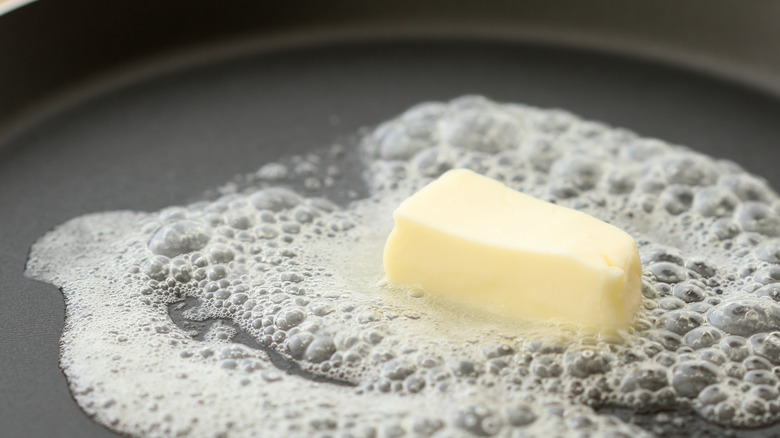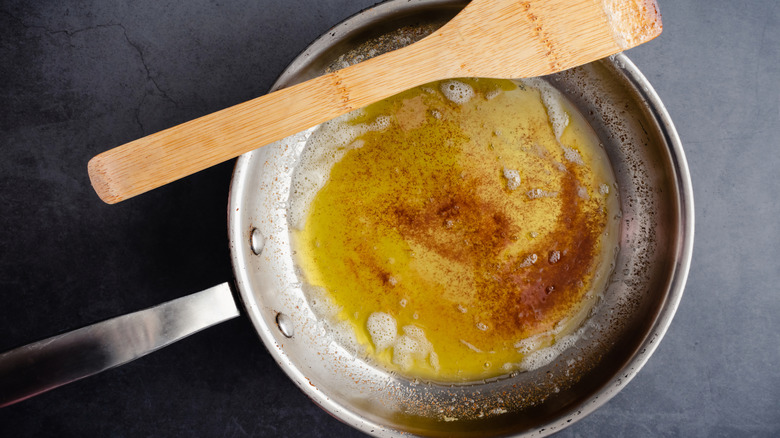Just How Different Are Melted And Brown Butter?
Sure, melted and brown butter may sound like different names for the same cooking method, but don't get confused. The former is the name given to butter that has simply been gently heated until it has liquefied. Brown butter, on the other hand, takes melting up another notch. This method not only pushes butter beyond a solid to a liquid, but it also consists of browning the milk solids in a process that reduces the water in the result but creates a wonderfully toasty flavor. The result gives a delightfully savory and complex new level of flavor to your dish.
Browned butter goes beyond simple melting and can improve all manner of meals, including cakes, pies, cookies, mashed potatoes (among other delicious additions), meats, and even scrambled eggs. The nutty hint of caramel is unique to buerre noisette – the French word for the technique — and can't be easily reproduced. Though it takes a little extra time to produce, brown butter is definitely worth it.
How to make brown butter
When it comes to melting butter, it can be done in one of two ways: on the stovetop or in a microwave. Either technique consists of three basic steps, starting with cutting the butter into smaller pieces, then heating and stirring until melted. The microwave method requires covering the container with a paper towel to avoid making a mess.
Browning butter, however, has about five phases that require you to use your senses of sight, hearing, and smell. After cutting the butter into smaller, uniform pieces, melt it over medium-low heat in a light-colored pan. Stir until it begins to liquify. At this stage, the butter will start bubbling and crackling; just keep stirring. When the water has evaporated, the crackling sounds will go away and a fine foam will appear. Again, don't stop stirring, lest the milk solids in the butter burn!
Watch closely as the butter begins to transform, given that this stage can go quickly. The butter beneath the foam will change colors from yellow to eventually a caramel brown. You should also soon smell a rich nutty aroma. When it reaches the caramel color, promptly remove your pan from the heat. Pour the butter — including all the tasty brown pieces on the bottom — into a bowl and allow it to cool before using. Fat-washed brown butter cocktail, anyone?

